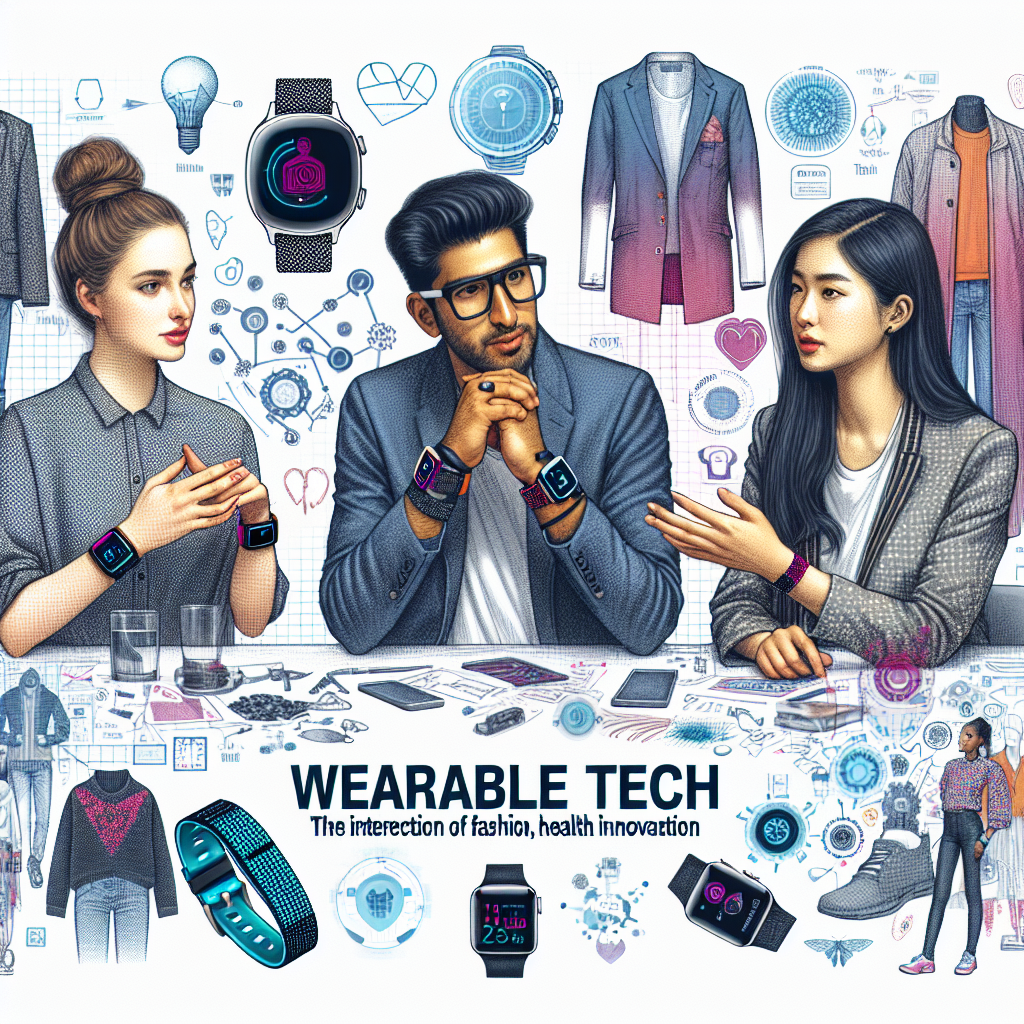Title: Wearable Tech: The Intersection of Fashion, Health, and Innovation
In the contemporary age, the realm of wearable technology has surged at a breakneck pace, weaving itself seamlessly into the fabric of our daily lives. This paradigm shift represents a harmonious confluence of fashion, health, and innovation, creating a transformative impact on how individuals perceive and interact with their personal well-being and their style.
## The Fusion of Fashion and Technology
Historically, fashion and technology have evolved in parallel, occasionally intersecting but never quite merging. However, the advent of wearable tech has forged an enduring bond between these two fields. Gone are the days when functional technology meant bulky gadgets. Modern wearables are as chic as they are sophisticated, seamlessly integrating functionality with high fashion.
Luxury brands and tech giants alike are clamoring for a share of this burgeoning market. Collaborations between fashion houses like Louis Vuitton and tech companies like Google have led to stylish smartwatches that don’t just tell time—they track health metrics and display notifications, all while complementing the wearer’s attire. Similarly, fitness brands have embraced aesthetically pleasing designs, ensuring that their health-centric products do not compromise on style.
## Health and Wellness Redefined
Perhaps the most significant impact of wearable tech is its transformative effect on health and wellness. Devices like fitness trackers, smartwatches, and even smart textiles have given individuals unprecedented access to critical health data. These wearables monitor metrics like heart rate, sleep patterns, physical activity, and even stress levels. Advanced models can also track blood oxygen levels and electrodermal activity, providing real-time health insights that were previously only accessible in clinical settings.
The implications for public health are profound. Wearable tech empowers individuals to take proactive control of their health, making informed decisions that can stave off chronic conditions like diabetes, hypertension, and cardiovascular disease. Moreover, this constant stream of data can be shared with healthcare providers, facilitating early diagnosis and personalized treatment plans.
## Innovation at Its Core
Innovation is the cornerstone of wearable tech, driving continuous advancements in both hardware and software. Miniaturization, for instance, has allowed developers to pack an array of sensors and processors into compact, lightweight devices. Battery life, once a significant constraint, has seen remarkable improvements through energy-efficient designs and wireless charging solutions.
On the software front, artificial intelligence (AI) and machine learning algorithms have elevated the functionality of wearables. These technologies analyze vast amounts of data to provide users with tailored insights and recommendations. For example, AI can predict a wearer’s potential health risks based on their data trends and suggest preventive measures. Additionally, voice assistants like Siri and Google Assistant integrated into wearables offer hands-free interaction, enhancing user convenience.
## Towards a Cybernetic Tomorrow
Looking ahead, the horizon of wearable tech promises even more groundbreaking developments. Pioneers in the field are exploring smart fabrics that can regulate body temperature, augmented reality (AR) glasses that seamlessly blend the digital and physical worlds, and biohacking wearables capable of providing detailed genomic insights.
In the sphere of mental health, innovations are underway to develop wearables that can detect and alleviate symptoms of anxiety and depression through biofeedback and guided meditation apps. The seamless integration of such technologies can revolutionize the mental health landscape, providing timely support and reducing stigma associated with mental health issues.
## Challenges and Considerations
Despite its many advances, wearable tech faces certain challenges. Data privacy remains a paramount issue, as the sensitive information collected by wearables must be safeguarded against breaches. Manufacturers must ensure robust security measures and transparent data usage policies to maintain user trust.
Moreover, accessibility and diversity in design are crucial. As wearable tech continues to penetrate diverse demographics, it must cater to varied body types, abilities, and aesthetic preferences. Inclusive design principles will ensure that the benefits of wearable technology are universally accessible.
## Conclusion
Wearable technology stands at the vibrant intersection of fashion, health, and innovation, heralding a new era where style meets substance, and health meets convenience. As this industry continues to evolve, it holds the promise of not just enhancing our lives but truly transforming them. From empowering individuals with real-time health insights to blending cutting-edge technology with high fashion, wearable tech is reshaping our world, one innovative step at a time.
